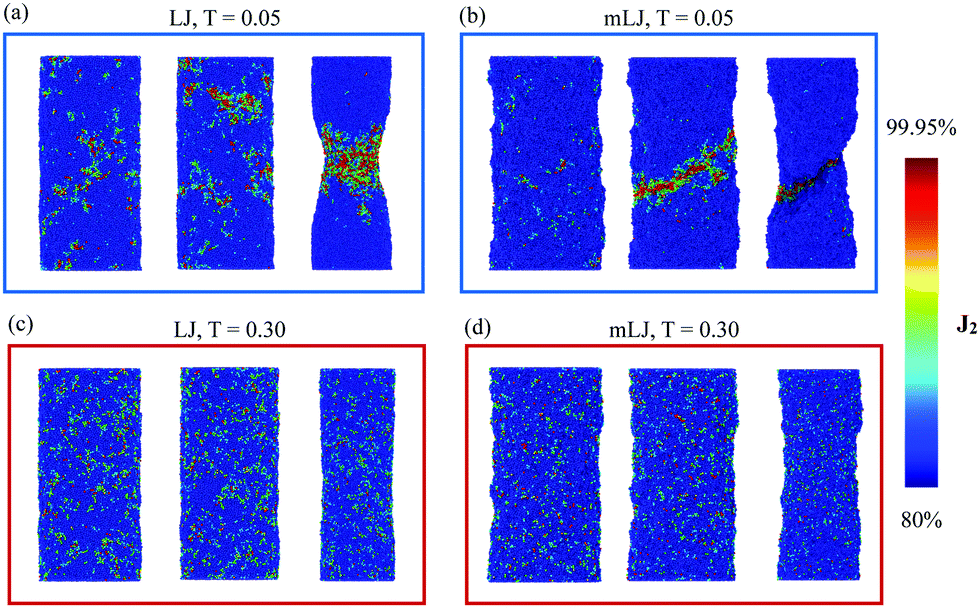Abstract
Brittle failure is ubiquitous in amorphous materials that are sufficiently cooled below their glass transition temperature, \(T_g\). This catastrophic failure mode is limiting for amorphous materials in many applications, and many fundamental questions surrounding it remain poorly understood. Two challenges that prevent a more fundamental understanding of the transition between a ductile response at temperatures near \(T_g\) to brittle failure at lower temperatures are (i) a lack of computationally inexpensive molecular models that capture the failure modes observed in experiments and (ii) the lack of quantitative metrics that can distinguish various failure mechanisms. In this work, we use molecular dynamics simulations to capture ductile-to-brittle transition in glass-forming oligomeric polymer systems where we systematically vary both the temperature relative to \(T_g\) and the form of the interaction potential to induce a variety of failure modes. We characterized the effects of this new potential on macroscopic mechanical properties as well as microscopic structural and dynamical response during deformation. Finally, we develop several quantitative metrics to distinguish between different failure modes, and we find that the transition between catastrophic brittle failure, necking, and homogeneous plastic flow is gradual as the temperature is increased.
